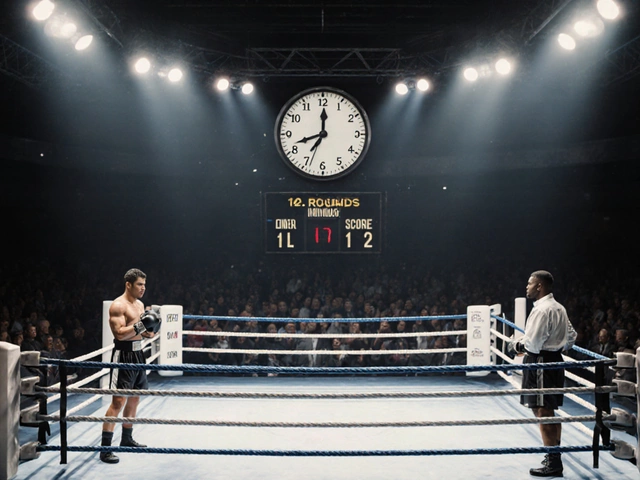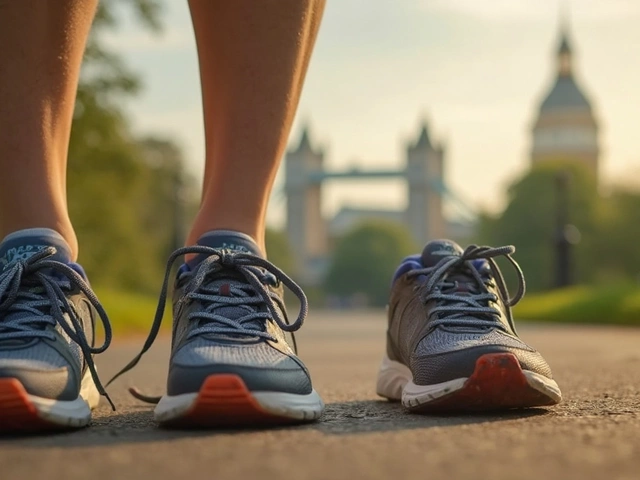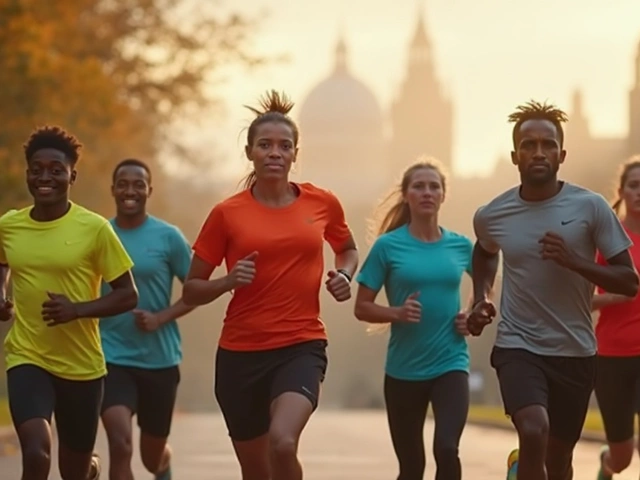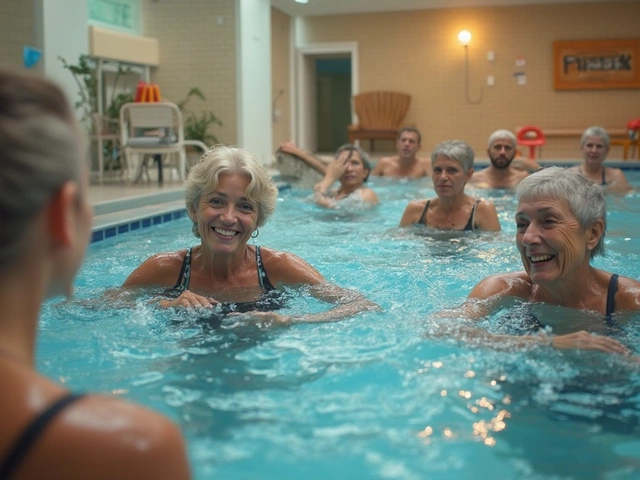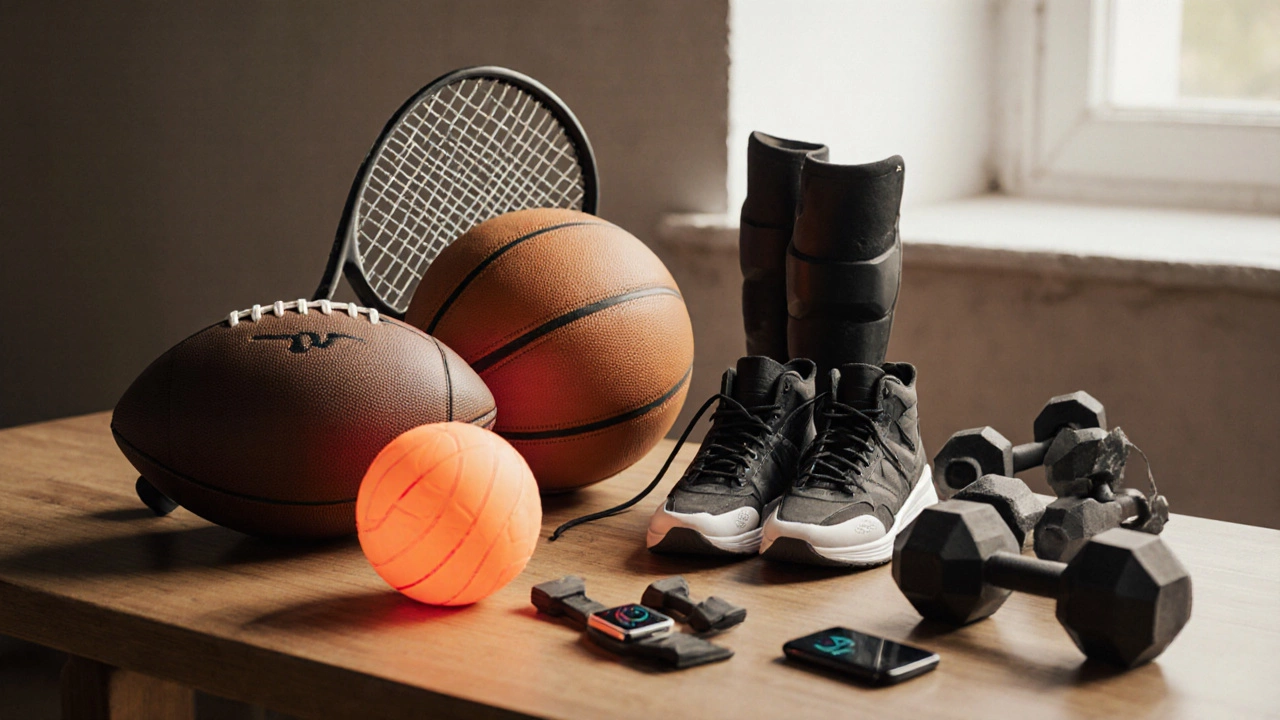
Sports Equipment October 8, 2025
Understanding Sport Equipment: Definition, Types, and Buying Guide
Sport Equipment Explorer
Select a sport category below to learn about essential equipment for that sport:
Football (Soccer)
Essential gear for soccer players
Basketball
Gear needed for basketball play
Tennis
Equipment for tennis enthusiasts
Running
Running-specific gear essentials
Gym & Home Workouts
Training equipment for fitness
All Equipment
View all categories at once
Essential Sport Equipment Overview
Click on any category above to see detailed equipment information.
Initiates and sustains play. Materials: Rubber, leather, synthetic composites.
Hits or directs a ball/shuttle. Materials: Graphite, aluminum, carbon fiber.
Absorbs impact, shields vulnerable parts. Materials: Foam, hard plastics, Kevlar.
Provides traction, cushioning, support. Materials: Leather, mesh, EVA foam, rubber.
Builds strength, endurance, flexibility. Materials: Steel, cast iron, rubber.
Tracks metrics, gives real-time feedback. Materials: Silicone, plastic, integrated sensors.
When you hear the term sport equipment is any gear, tool, or apparel used to play, train for, or support a sport, you might picture a football or a set of dumbbells. In reality, the world of sport equipment stretches far beyond the basics, covering everything from high‑tech wearables to simple safety pads.
Quick Takeaways
- Sport equipment includes any object that assists performance, safety, or enjoyment in sports.
- It can be grouped by function (ball, protective gear, footwear) or by sport (football, tennis, swimming).
- Choosing the right gear involves fit, material quality, sport‑specific standards, and budget.
- Maintenance-cleaning, storage, and regular inspection-extends lifespan and prevents injuries.
- 2025 trends feature smart wearables, eco‑friendly materials, and modular training systems.
Defining Sport Equipment
At its core, sport equipment is any physical object designed to facilitate athletic activity. This definition embraces:
- Ball‑type items that start or continue play.
- Rackets, bats, or sticks that act as extensions of the player’s body.
- Protective gear that reduces injury risk.
- Footwear engineered for traction, cushioning, and sport‑specific movement.
- Fitness machines and training accessories used for conditioning.
- Apparel and wearable tech that monitor performance.
Each category serves a distinct purpose, yet all share the common goal of enhancing the sporting experience.
Major Categories of Sport Equipment
| Category | Primary Use | Typical Materials | Example Sports |
|---|---|---|---|
| Ball | Initiates and sustains play | Rubber, leather, synthetic composites | Football, basketball, volleyball |
| Racket / Bat | Hits or directs a ball/shuttle | Graphite, aluminum, carbon fiber | Tennis, badminton, baseball |
| Protective Gear | Absorbs impact, shields vulnerable parts | Foam, hard plastics, Kevlar | Boxing, hockey, cycling |
| Footwear | Provides traction, cushioning, support | Leather, mesh, EVA foam, rubber | Running, football, trail hiking |
| Fitness Equipment | Builds strength, endurance, flexibility | Steel, cast iron, rubber | Gym workouts, home training |
| Wearable Technology | Tracks metrics, gives real‑time feedback | Silicone, plastic, integrated sensors | Running, cycling, team sports |
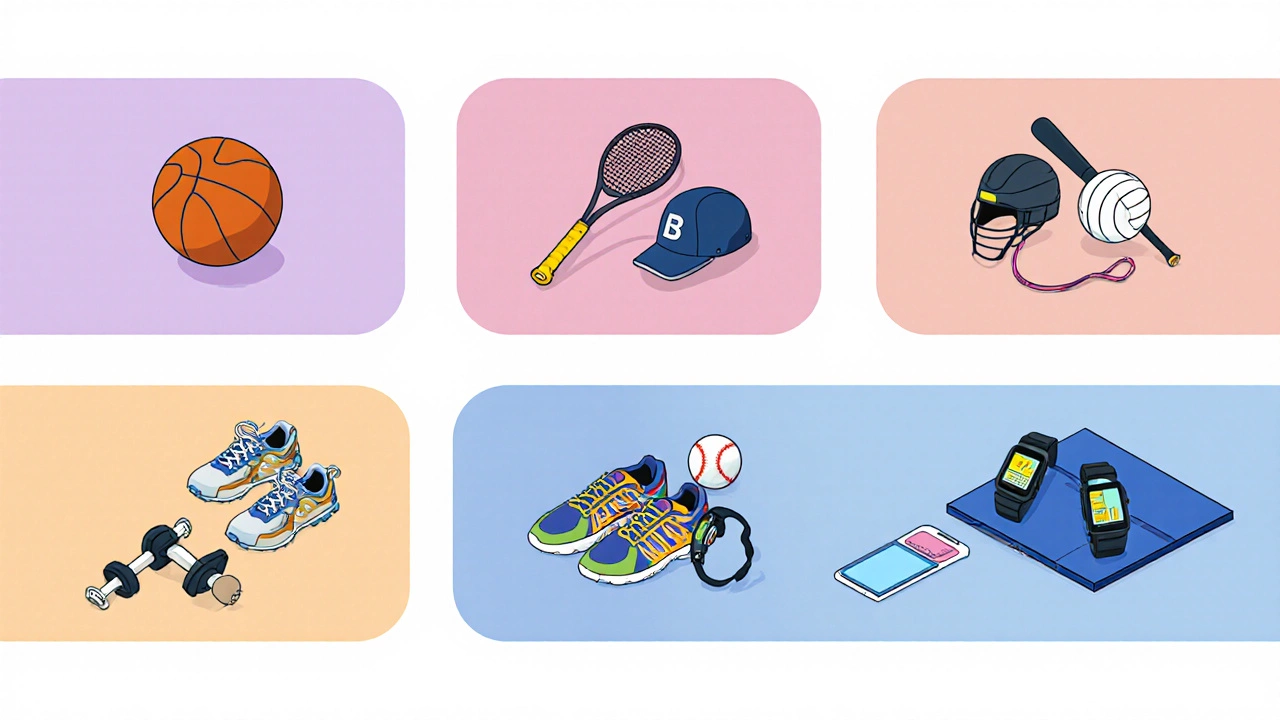
Key Pieces of Equipment for Popular Sports
Below is a quick rundown of essential gear for a few of the world’s most‑played sports. Each entry highlights the typical specifications you’ll encounter on the market.
Football (Soccer)
- Ball: 5‑size, stitched leather or PU, pressure‑rated 0.6-1.1 bar.
- Footwear: Cleats with molded studs, upper made of synthetic leather for durability.
- Shin guards: Hard shell with foam lining, must cover tibia from ankle to knee.
Basketball
- Ball: 29.5‑inch circumference, composite leather, 7‑pole air valve. \n
- Footwear: High‑top sneaker with ankle support, rubber outsole designed for indoor courts.
- Optional Protective sleeves for knees and elbows.
Tennis
- Racket: 27-29‑inch length, graphite frame, 16‑18oz strung weight.
- Balls: Pressurized, felt‑covered, ISO‑400 certified.
- Comfortable footwear with lateral support and non‑marking sole.
Running
- Footwear: Cushioning midsole (EVA or PU), breathable mesh upper, durable outsole.
- Wearable tech: GPS watch or heart‑rate strap, battery life ≥ 20hrs.
- Optional hydro‑flask for hydration.
Gym & Home Workouts
- Dumbbells: Cast iron or rubber‑coated, selectable 5kg-30kg.
- Resistance bands: Latex, color‑coded tension levels.
- Yoga mat: TPE or PVC, 6mm thickness.
How to Choose Quality Sport Equipment
Selecting the right gear isn’t just about price tags. Follow these five checkpoints before you click “Add to Cart”.
- Fit and Comfort: Try on shoes, pads, or apparel. A good fit prevents blisters and ensures proper biomechanics.
- Material Durability: Look for reputable composites-carbon fiber frames for rackets, PU leather for balls, Kevlar for protective gear.
- Sport‑Specific Standards: Many governing bodies (e.g., FIFA, ITF, IAAF) publish equipment specifications. Verify compliance.
- Brand Reputation & Warranty: Established brands often back products with multi‑year warranties, indicating confidence in quality.
- Budget vs. Performance: Decide if you need entry‑level gear for casual play or high‑end models for competition. Mid‑range options frequently offer the best cost‑performance ratio.
Maintenance and Safety Tips
Even the best gear will wear out if you neglect it. Here’s a quick care checklist:
- Cleaning: Wipe balls and rackets with a damp cloth after use. Avoid harsh chemicals on leather.
- Storage: Keep footwear in a ventilated area to prevent odor buildup. Store metallic equipment in dry places to avoid rust.
- Inspection: Check protective gear for cracks or compression loss before each session.
- Replacement Cycle: Most balls lose optimal bounce after 30-50 uses; shoes generally need replacement after 300-500km of running.
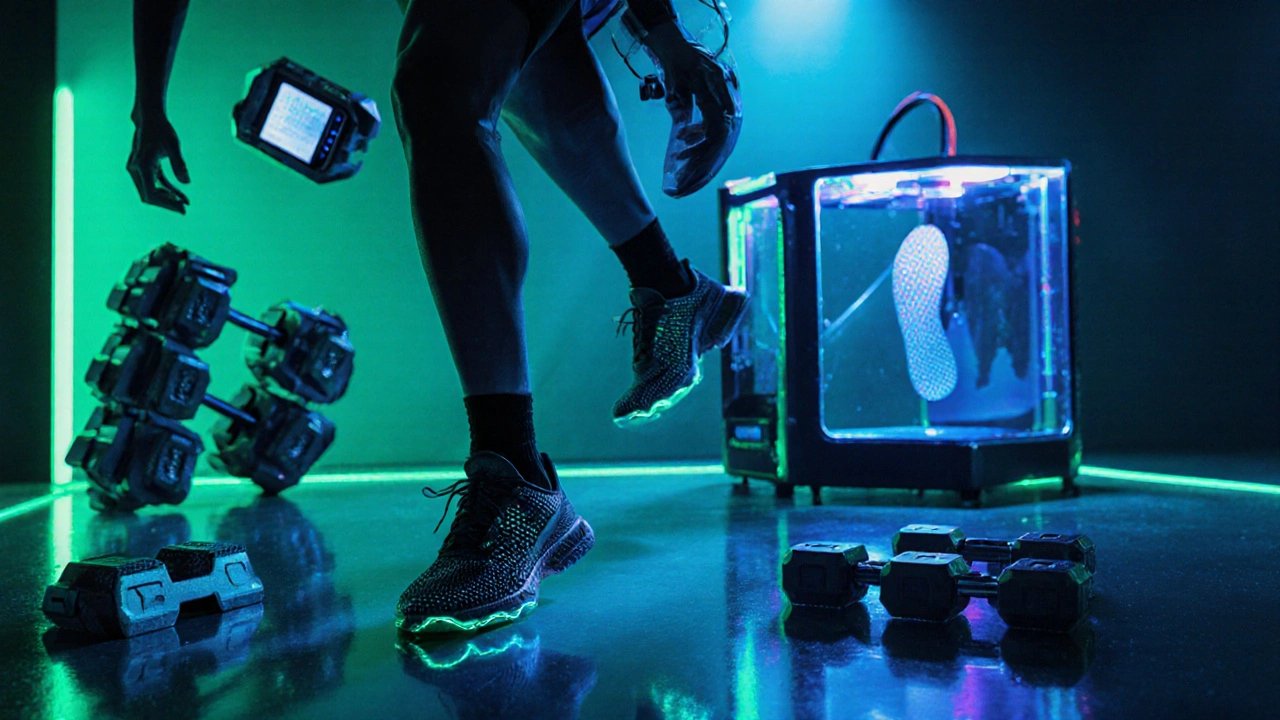
2025 Trends in Sport Equipment
Technology continues to reshape how we play. The biggest trends you’ll see in stores and online this year include:
- Smart Wearables: Integrated sensors in shoes and jerseys that stream performance data to smartphones.
- Eco‑Friendly Materials: Recycled ocean plastics used in board sports and tennis strings.
- Modular Training Systems: Adjustable dumbbell sets that replace entire weight racks, saving space.
- 3‑D‑Printed Custom Fit: Companies offering on‑demand printed insoles and helmets tailored to individual biomechanics.
Frequently Asked Questions
What counts as sport equipment?
Any object that helps you play, train for, or stay safe while doing a sport-ranging from balls and shoes to smart watches and protective pads.
Do I need high‑end gear as a beginner?
Not always. Entry‑level equipment from reputable brands usually offers sufficient performance and durability for casual play. Upgrade only when you notice limitations affecting comfort or safety.
How often should I replace running shoes?
A typical lifespan is 300-500kilometers (about 200-300miles). Watch for reduced cushioning, uneven wear on the outsole, or new aches after runs.
Are synthetic balls as good as leather ones?
Modern synthetic (PU) balls mimic leather feel and durability while offering better weather resistance. For high‑level competition, many leagues still require leather, but for everyday play synthetic options are perfectly fine.
What safety gear is essential for contact sports?
At minimum you need head protection (helmet), mouthguard, and appropriate padding for the areas most exposed-shins for football, elbows/knees for rugby, and gloves for boxing.
Can I use the same shoes for gym workouts and running?
It’s best to keep them separate. Running shoes prioritize forward cushioning, while gym shoes need a flatter, more stable sole for lifts. Mixing them can increase injury risk and wear the shoes faster.
How do I know if a piece of equipment meets official standards?
Look for certification logos (e.g., FIFA Quality, ITF Approved) or check product specs against governing‑body guidelines listed on their official websites.
Next Steps and Troubleshooting
If you’re ready to buy, start by listing the sports you play most often. Match each sport to its essential equipment categories from the table above, then compare a few leading brands using the criteria we outlined. Should you encounter any fit issues-like shoes feeling too tight after a day’s wear-return them within the retailer’s 30‑day window and try a size up or a different model.
For existing gear that’s showing wear, follow the maintenance checklist. If a protective pad no longer absorbs impact, replace it immediately; safety should never be compromised.
Finally, keep an eye on 2025’s emerging tech. A smartwatch with built‑in VO2 max tracking, for example, can provide valuable data to fine‑tune your training plan without buying extra devices.
